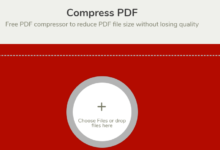MVP Development Guide for App Startups
One of the main reasons why most startups fail is that their software products miss the mark and fail to meet the requirements of the customers. This makes them impossible to compete with other products in the market. As a result, startups fail and the investment of money and resources go in vain.
So, how do you know in advance whether your product idea is right or not? How to make sure your product will satisfactorily compete in the market? Well, this is where the concept of a Minimum Viable Product (MVP) comes into play. Continue reading to find out more about MVP development and the best practices you can follow as an app startup looking to launch a successful product.
What is a Minimum Viable Product?
A Minimum Viable Product is the first version of a product that is developed with minimal features and functionalities. The primary goal of an MVP is to test out a product idea in the market. Entrepreneurs invest in MVP development so they can start small and validate their idea and market potential before going all out to invest in a full-scale product.
An MVP should not be confused with a ‘draft’ or an incomplete product. Instead, it is a scaled-back version of a product that is built with only the most important features and functionalities.
More on this topic at: https://www.goodcore.co.uk/services/mvp-development/
If you are an app startup looking to launch an app in the market, you should consider developing an MVP first. This way you can evaluate if your app idea is competitive enough and in case if it is not, you can avoid wasting all your investment and efforts in vain. Let’s discuss some of the best practices to develop MVP the right way.
Best Practices for the MVP Development Process
Before you jump into the process of MVP app development, here are some best practices that you can adopt to improve and expedite the journey of creating an MVP. With the help of these, you can build a successful MVP in an efficient manner.
Well-Defined Target Audience
You can only develop a perfect product when you have a clear idea about who you are developing the product for. That is the target audience of your product or, in other words, the potential customers of your business. Identify your target audience and conduct research to know their requirements. What features and functionalities do they require? What is already being offered to them by competitor products? Why would they buy your product? What would be an acceptable price point for them?
All of these are crucially important questions you need to research to fully understand who your audience is and what their requirements are.
Experienced Development Partner
As an app startup, you need a technology partner – a software development company or an in-house development team – to bring your product vision to life. Your development team will play an important role throughout the process of MVP app development and even after that. Therefore, the success of your startup will heavily depend on the competence of your development team.
For successful product development, you need to find a development team that is experienced in developing MVPs for startups and that can develop the software for you as per your budget and requirements.
Precise Requirements
As discussed previously, MVP is a scaled-back version of a product. It has limited features and functionalities. Therefore, as a startup owner, you should have a precise set of requirements for your MVP. It should be an exact list of features you want your MVP to have at this stage and a list of features that you wish to add later on.
Having a precise set of MVP requirements is important because developing an MVP with too many features will defeat its purpose and it will make the development process very expensive. Similarly, having too few requirements will also undermine your MVP and render this process useless.
Evaluate Feedback and Repeat
The purpose of developing an MVP is to test out the product idea and gather market feedback. The market response to an MVP can be positive or negative, but whatever the feedback might be, it should be evaluated and used to improve the product in the later phases of development. The feedback should guide your next steps of developing a full-scale product, only then you can make sure you develop a final product that succeeds in the market.
5 Steps to Build an MVP
There isn’t a set formula for the success of startups but the MVP software development phase determines the market standing and future of the product. We talked about the best practices of developing MVPs but let’s shed light on the exact steps you need to take to build a minimum viable product.
- Define your product idea: If you are a startup owner planning to launch a web application, the first step of your MVP web development process is to spend time defining your product idea. Startup founders are often certain of their product idea to be innovative and unique but most of them don’t think their ideas through. Many realise much later in the process that their original ideas are not competitive enough and end up changing them. Therefore, the first thing to do is to have a clear idea in your mind about your product, what values your product must have, and what problems it should solve.
- Research the market and competition: Next step is to validate the market potential of your idea. Define the target audience of your future product and conduct research to find out if your product will interest them. Collect information about products from competitors to determine how you can make your product stand out from the rest.
- Define and prioritise features: This step is about finalising the most important features of your product that will be included in your MVP. Begin with listing down ALL the features that you want your product to have and divide them into three categories: features that are absolutely essential for the product, features that are important and complement your product, and features that are additional and less important. This way you can identify the must-have features for your product and these will be included in the MVP version of your product.
- Build the MVP: With adequate market research and a clear and well-defined list of requirements, you can have your software team begin the MVP development process. Once all the elements of your application are developed and thoroughly tested for quality and performance, your app will be ready to be rolled out to the target users.
- Gather feedback and develop further: Once your MVP is launched in the market you can start collecting the response that your product receives from early adopters and use that to guide the future development of your product. A good MVP must provide you with valuable feedback that you can use to improve and evolve the product into a full-scale product.







